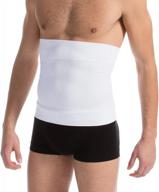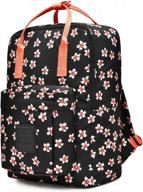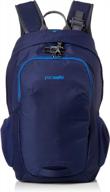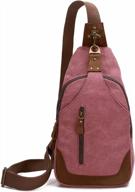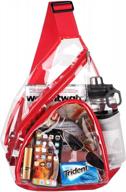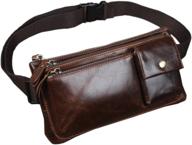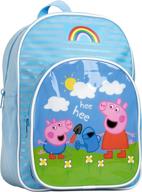How to choose the right backpack size for your child?
Choosing the right sized backpack for your child is important to ensure they carry a load that is appropriate for their body size and age. An ill-fitting backpack can cause back, neck and shoulder pain. Follow these tips to find the right backpack size:
Consider your child's age and size
- For preschoolers, look for a small 10-12 inch backpack
- For elementary school kids, find a mid-sized 12-16 inch backpack
- For middle schoolers, choose a full-sized 16-18 inch backpack
- Measure your child's torso length and height to find the best fit
Aim for the right backpack size ratios
| Age | Backpack Size | Torso to Backpack Ratio |
|---|---|---|
| Preschool | 10-12 inches | Torso should be about 2 times the backpack height |
| Elementary | 12-16 inches | Torso should be 2.5-3 times the backpack height |
| Middle School | 16-18 inches | Torso should be 3.5-4 times the backpack height |
Pick a lightweight backpack
- Choose a backpack made of lightweight fabric like nylon or polyester
- Look for padded shoulder straps for comfort
- Make sure the backpack has multiple compartments to evenly distribute the weight
Following these tips will ensure you find the right sized backpack for your child's body frame, age and grade level. A properly fitted backpack prevents injury and discomfort while carrying their school supplies.
How to organize your child's backpack efficiently?
Having an organized backpack helps kids stay on top of their schoolwork and makes their lives easier. Follow these tips to help your child keep their backpack tidy and streamlined.
Use compartments and dividers
- Look for a backpack with multiple compartments and pockets to organize supplies
- Use dividers or pouches to separate items like pens, pencils, erasers
- Have a pouch for electronics like calculators, tablets or laptops
Pack according to schedule
Help your child pack their bag according to their daily schedule:
- Front pocket for items needed in the morning like pencils, erasers, sharpener
- Main section for books and binders needed before lunch
- Back pocket for books needed in the afternoon
Unpack and repack daily
- Have your child empty their backpack after school each day
- Refill it with what they need for the next day
- This avoids carrying unnecessary items or forgetting supplies
Top products in 🎒 Kids' Backpacks
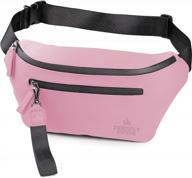

16 Review

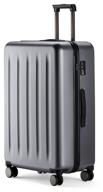

14 Review

Pack the heaviest items closest to the back
- Pack heavy books and binders against the back padding
- This helps distribute weight more evenly and prevent back pain
Know what your child carries
- Be aware of everything your child lugs to and from school
- Make sure they only carry what they absolutely need each day
An organized backpack makes school days less stressful. Set up a packing station at home and help your child develop smart organizational skills. A tidy backpack with well-allocated weight helps avoid shoulder, neck and back pain.
How to clean and maintain a kids' backpack?
Kids' backpacks get a lot of wear and tear. Follow these tips to keep your child's school backpack clean and in good condition.
Regularly empty and organize the backpack
- Have your child empty the backpack completely every evening
- Clean out any food wrappers or scraps
- Reorganize supplies and reload what’s needed for the next day
Clean the interior
- Wipe inside surfaces with a damp cloth and mild detergent
- For stains, use a soft brush and baking soda paste
- Rinse off soap residue and allow to fully dry before repacking
Wash the exterior
- Spot clean any dirt or stains
- For a deeper clean, toss the backpack into a laundry bag and machine wash cold on a gentle cycle with mild detergent
- Air dry the backpack fully before using again
Similar products
Treat zippers and hardware
- Coat zippers with paraffin wax to help them glide smoothly
- Use a toothbrush to scrub caked on gunk from buckles
- Wipe metal hardware with rubbing alcohol to remove grime
Inspect for damage
- Look for ripped seams or frayed fabric edges
- Repair tears with fabric glue or patches
- Replace broken clips, straps or zippers as needed
Regular cleaning and inspections prolong the life of your child’s backpack. Teach them to care for their bag to get more years of use out of it.
How to pick cute and stylish backpacks for kids?
Backpacks come in endless fun styles today. Here's how to choose a fashionable yet functional backpack for your child.
Pick a favorite color
- Let your child pick a color they love like pink, blue, green
- Vibrant colors and patterns express kids' personalities
- Reflective colors like yellow help with visibility
Look for popular characters and themes
- Choose backpacks with their favorite superhero, TV show or movie characters
- Pick cute critter bags with animals, emojis or fun shapes
- Go for adventure themes like space, jungle or ocean creatures
Consider ergonomic features
- Padded, adjustable shoulder straps provide comfort and support
- Look for breathable back padding to prevent overheating
- Multiple compartments help distribute weight evenly
Find the right size
- Measure your child's torso to find the ideal height and width
- Stick to the recommended weight limits for their age
- Leave room for growth with adjustable straps
Check durability features
- Reinforced stitching prevents tears and rips
- Durable water-resistant fabric protects contents
- Strong zippers, buckles and clips withstand daily use
The backpack they carry reflects your child's style. A cute bag with their favorite theme makes school days more fun. Just be sure to check functional features too for maximum comfort and practicality.
How To Choose The Right Size Backpack For Your Child?
Choosing the right size backpack for your child is important to ensure comfort and safety. Here are some tips to help you choose the right size backpack for your child:
Remember to also consider the weight of the backpack, as it should not be more than 10 to 15% of your child's body weight. Choosing the right size backpack will help your child carry their belongings comfortably without causing any strain on their muscles.
Another interesting products
What Are Some Features To Look For In A Backpack For Kids?
When looking for a backpack for kids, there are several features to consider to ensure comfort, organization, and safety. Here are some of the top features to look for:
Additionally, consider adding some essential items to the backpack such as a small refillable water bottle, a healthy snack bar, a laminated personal information card, hand sanitizer, and a tiny first-aid kit. By considering these features, you can choose a backpack that is comfortable, durable, and safe for your child to use.
What Are Some Backpacks With Reflective Features For Kids?
There are several backpacks with reflective features available for kids. Here are some options:
- Reflective Backpack by Amazon.com: This backpack is designed for commuters and has high visibility reflective strips. It is water-resistant and can fit a 15.6-inch laptop.
- Trail maker Kids Reflective Backpack for School by Amazon: This colorful backpack has reflective stripes that reflect light and increase visibility. It also has a side pocket and padded straps.
- REFLECT360 Children's Fully Reflective Grey 20L Backpack by Proviz: This backpack has a 100% reflective outer-shell, adjustable chest strap, and AquaGuard zips with double slides and cord pulls.
- Reflective Backpacks for Kids by Pottery Barn Kids: Pottery Barn Kids has an array of backpacks made with reflective materials, which are easier to see in low light conditions.
- Zinger Backpack Pannier by Po Campo: This backpack features reflective accents, padded shoulder straps, and water-resistant coated fabric. It is designed for kids and is perfect for a day of fun or a day of learning.
- Kids' Backpacks with Reflective Tape by Target: Target has a collection of kids' backpacks with reflective tape. These backpacks come in playful patterns and durable designs.
By choosing a backpack with reflective features, you can increase your child's visibility and safety while they are walking, biking, or commuting to school.






